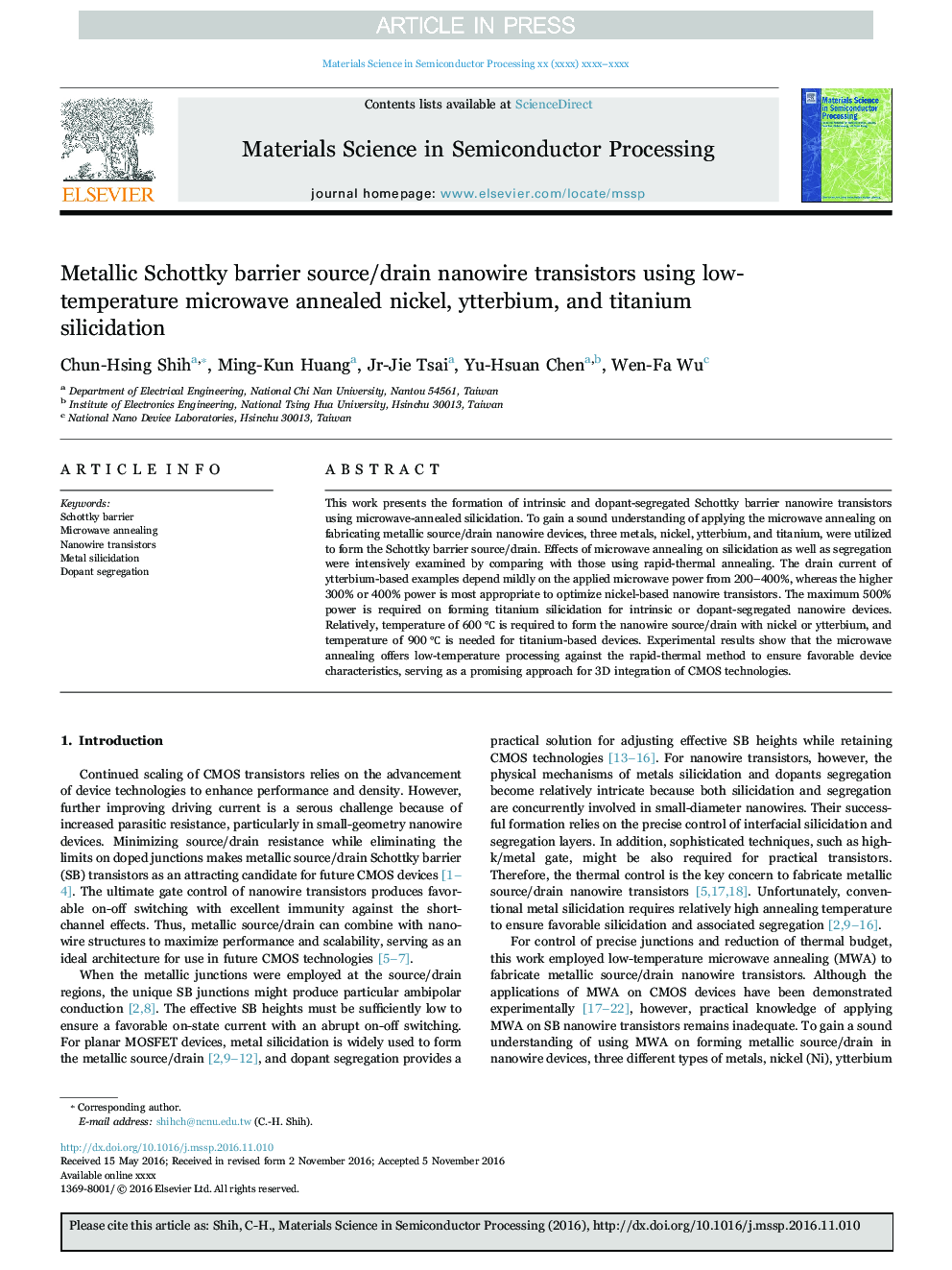| Article ID | Journal | Published Year | Pages | File Type |
|---|---|---|---|---|
| 5005917 | Materials Science in Semiconductor Processing | 2017 | 7 Pages |
Abstract
This work presents the formation of intrinsic and dopant-segregated Schottky barrier nanowire transistors using microwave-annealed silicidation. To gain a sound understanding of applying the microwave annealing on fabricating metallic source/drain nanowire devices, three metals, nickel, ytterbium, and titanium, were utilized to form the Schottky barrier source/drain. Effects of microwave annealing on silicidation as well as segregation were intensively examined by comparing with those using rapid-thermal annealing. The drain current of ytterbium-based examples depend mildly on the applied microwave power from 200-400%, whereas the higher 300% or 400% power is most appropriate to optimize nickel-based nanowire transistors. The maximum 500% power is required on forming titanium silicidation for intrinsic or dopant-segregated nanowire devices. Relatively, temperature of 600Â â is required to form the nanowire source/drain with nickel or ytterbium, and temperature of 900Â â is needed for titanium-based devices. Experimental results show that the microwave annealing offers low-temperature processing against the rapid-thermal method to ensure favorable device characteristics, serving as a promising approach for 3D integration of CMOS technologies.
Related Topics
Physical Sciences and Engineering
Engineering
Electrical and Electronic Engineering
Authors
Chun-Hsing Shih, Ming-Kun Huang, Jr-Jie Tsai, Yu-Hsuan Chen, Wen-Fa Wu,
